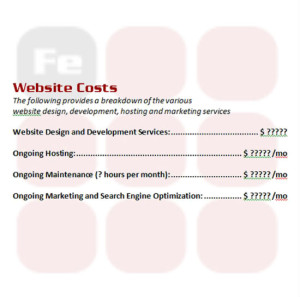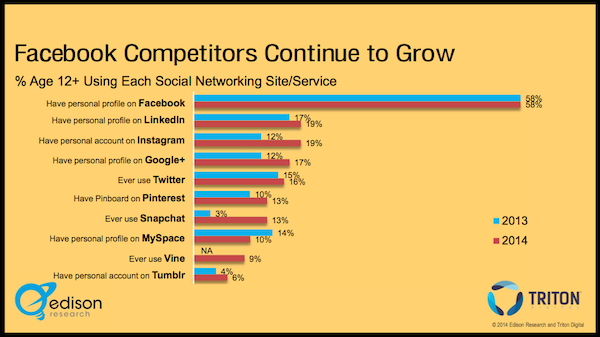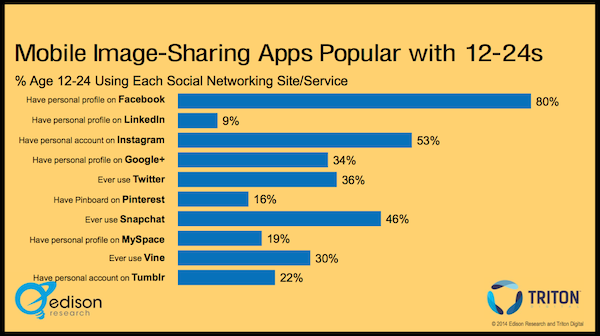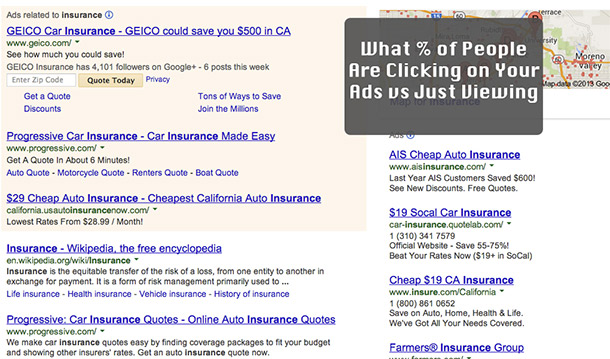-
Recent Posts
Categories
Latest Tweets
Tag Cloud
advertising american express amex blog blogging brand branding budget friendly business cards business success commercial printing commerical printing company brand direct mail effective marketing email email marketing facebook globaltech globaltech east inc google graphic design keywords logo mail marketing online online marketing online reputation pay-per-click ads print printing print marketing print myths print rumors reputation sbs seo small business small business saturday social social media twitter website website content
Category Archives: Online Marketing
How Much Does a Website Cost?
By: Chris Foss, Published August 31, 2014
Over the past 18 years, I have written thousands of website proposals – for design, development, hosting, and/or marketing (SEO) – for companies and organizations of every size and (just about) every industry. Some people want a basic brochure website, others might want full online marketing strategies, while others ask for things that are, literally, impossible to develop. Everyone, however, always wants to know:
“How much will this website cost?”
And after 18 years, my answer is still the same. Websites can cost anywhere from free to more than $100 million, it all depends on what you want to actually achieve online.
Let’s discuss the design and build first
To start, ask yourself a few questions.
1. Are you looking to sell products online or include any ecommerce?
2. Do you require backend integration with any internal databases or systems (CRM, AMS, Inventory/warehouse system, accounting)?
3. Is your website primarily a marketing and informational site?
4. How tech savvy is your staff?
5. How established is your brand (i.e. will your web design be creating everything from scratch or do you have established brand guidelines)?
Finally, one of the toughest questions of all: how valuable is this website to your business or organization? If your business is a local Burger King franchise, then a website, while important, is not overly valuable compared to the rest of your marketing and operational needs. However, if your business is an online dating service, where the website IS the business, then obviously the design and build of the website will require much more attention and ongoing development.
Ok, so how much should I budget for my website?
Now that you’ve asked yourself some important questions, let’s get down to at least some budget ranges.
Cost of Basic Websites
 For many small businesses, a basic website is a great place to start. These types of websites can range from FREE (but be careful what you sign up for!) to around $5,000. A basic website is typically 3-10 pages and really just focuses on providing basic information about the business – who you are, what you offer, and how to contact you. A website company will typically stylize an existing theme or template and work with clients to build out these sites for $4,000-$5,000.
For many small businesses, a basic website is a great place to start. These types of websites can range from FREE (but be careful what you sign up for!) to around $5,000. A basic website is typically 3-10 pages and really just focuses on providing basic information about the business – who you are, what you offer, and how to contact you. A website company will typically stylize an existing theme or template and work with clients to build out these sites for $4,000-$5,000.
Cost of Custom Websites
I truly believe that all businesses should eventually have a custom or advanced website. Basic, template websites are fantastic for businesses starting out with a limited budget, but for a website to truly work for you and generate an ROI, you should consider a Web firm to build you a custom design website. After all, look at any successful website that you visit on a regular basis. Are any of them templates? No. And there is a good reason for that.
A firm will work with you to build a custom design website, and the process should start with in-depth discussions about your target audiences, corporate culture, online business goals, and behavior/conversion goals. A custom site should be developed to successfully address all of these points in order to establish a strong, effective website for your business or organization. Custom website designs typically fall anywhere from $9,000 – $20,000; however, depending on the size and requirements of your website, the cost can certainly fall above this range.
Cost of Advanced Websites
Advanced websites are really any project that goes beyond a marketing/informational website. These are websites that include ecommerce, highly interactive features, backend integration, and custom programming. Projects like these are spec’d out on a case-by-case basis and can cost anywhere from $20,000 to several million dollars.
Marketing Costs
As you can imagine, marketing costs can also vary greatly simply because there are a wide range of marketing services that we can apply to any website. Typical engagements with a firm include SEO services, social media campaigns, email marketing efforts, and consulting with online advertising. Marketing costs are usually centered around ongoing efforts and measurable marketing goals that we establish directly with you. Based on these efforts and deliverables, marketing costs typically range from $500/mo to $5,000/mo, again, depending on how involved, and how aggressive, you want your web firm to be.
Additional Costs
As you finalize your budget, keep in mind some of these additional costs as well.
1. Purchasing a domain name ($10-$20/year)
2. Hosting (usually $20-$100/mo depending on hosting needs)
3. Ongoing Maintenance – Don’t forget about this one. Despite how perfect the website might be at launch, within a few months, you can already start making upgrades. Platforms and plugins need upgraded and new functionality/new designs can always improve your site. You should plan to evolve your website on a regular basis, and this is usually provided on either an “as needed” basis or through a maintenance retainer.
4. Security Certificate for forms with private information or ecommerce ($200/yr)
5. Stock Photography ($20-$100 per image) or Professional Photography if needed
6. Video production if needed
Read more at https://www.business2community.com/online-marketing/much-website-cost-0987537#SdyRbhIFQFhkk4Vk.99
Posted in Online Marketing
Tagged advertising, marketing, online marketing, seo, website, website cost, website design, website develop
67% Of Americans Use Social Media (With One In Six Active On Twitter)
 Two thirds of Americans have a profile on one or more social networks, reveals a new study, with about one in six (16 percent) using Twitter.
Two thirds of Americans have a profile on one or more social networks, reveals a new study, with about one in six (16 percent) using Twitter.
Edison Research surveyed more than two thousand U.S. citizens re using digital platforms and found that 67 percent of respondents use social media.
 Of these, more than half (58 percent) are active on Facebook – a statistic that is unchanged year-on-year – with 19 percent using LinkedIn (up two percentage points), 19 percent on Instagram (up 7 percentage points), 17 percent on Google+ (up 5 percentage points) and 16 percent on Twitter (up 1 percentage point).
Of these, more than half (58 percent) are active on Facebook – a statistic that is unchanged year-on-year – with 19 percent using LinkedIn (up two percentage points), 19 percent on Instagram (up 7 percentage points), 17 percent on Google+ (up 5 percentage points) and 16 percent on Twitter (up 1 percentage point).

As you might expect, all social networks – with the exception of LinkedIn – are more popular amongst the younger demographic.

An estimated 75 million Americans check their social networks several times each day.

Overall, these numbers are bullish for social media but not particularly strong for Twitter, which increasingly looks like it will have to keep a very close eye on Instagram (and even Snapchat) for attention from users of all ages, but especially the next generation of consumers.
Posted in Online Marketing
Tagged facebook, online marketing, social media, social networks, twitter
3 Things You Probably Don’t Know About Google Adwords
I get asked all the time about Google Adwords. For the uninitiated, Adwords are the ads on the top and side of Google when you enter in a search. Entrepreneurs are always wanting to rank their website at the top of every search, but there are certain things that you need to know before getting started with Adwords.
So I decided to answer three of the questions I get asked the most — all in one article. This won’t answer every question you may have but this should be a good start.
1. There are three types of keywords.
In the online world, there are three types of keywords that consumers use when searching online that business owners need to keep in mind. First they do their research, then they compare products and then they search with the intent to purchase. For instance, this is the exact process I used to purchase my new Bluetooth wireless headset:
Research phrases: When someone is in the research phase, the person often has no idea what he or she wants, searching only for generic and simple terms. I started my search with “headsets.” During this process, I learned that there are all kinds of different headsets: wireless, non-wireless, microphone, no microphone, etc. Notice, I have no idea what brand I want yet.
Comparison: As I peruse the search results for those generic terms, things start to get more specific. Not only am I reading reviews, but I’m pitting two products against each other. If you were in the comparison stage, you would most likely use terms like:
•Beats vs Bose
•Beats by Dre review
•Beats pricing
•Beats alternative
I personally don’t recommend that business owners purchase these types of phrases as I think they are a waste of your money. These types of phrases are used by people who are searching for an answer and are merely investigating a future purchase. If you’re bidding on phrases like this, try stopping for a week and see if your profits rise.
Buyer: A customer often has his or her credit card sitting next to the keyboard as they are searching. That’s why you need to come up with the right keywords that they are searching for. Most people know exactly what they want, just not where to find it. So they search. They will use specific keywords. You can always tell you have a “buyer keyword” when they use the following:
•color
•size
•make
•model
•brand name
For example, as I read reviews of headsets, I finally found the one I wanted. It was made by Planatronics and called the Audio 995. I was ready to purchase and I entered into the Google search results the phrase “Planatronics Audio 995.”
This is what I call buyer keywords. These are keyword phrases that people use with specific things about the product. If you know these keywords, you should be bidding on them as they usually lead to sales.
2. Try dynamic keyword insertion.
You can save time when you use dynamic keyword insertion. Rather than writing lots of ads, you can shortcut the process by putting {keyword} in the ad. It can be used in a number of different places:
•The headline
•The description lines
•Display URL
•Destination URL
Let’s say you have 1,000 keywords and you don’t want to write 1,000 different ads. All you have to do is add {keyword} and your desired keywords will appear. In most cases the keyword or keyword phrase the searcher just used while searching in Google.
In case you have a keyword that won’t fit in the ad, you can set a default word. If your default word was banana, then you do the following: {keyword:banana}. There isn’t a space between the colon and banana.
3. Ad position doesn’t affect CTR.
Because I’m going to get a lot of slack for saying this, I want to make sure that you read this carefully. The range of ad position for the first page of Google is 1 to 11. I’ve found that click-through-rate (CTR) isn’t affected by the ad position. Note that it doesn’t affect quality score either.

How can I make such a claim? Google bolds the keyword that is being searched for by a user. As you can see in the search above, I searched for “Insurance” and it’s bolded in the picture.
User sees your ad and sees that it’s relevant to them. The CTR will be the same, regardless of ad position. Make sure your keywords are in the ad somewhere, preferably the Title.
Posted in Online Marketing
Tagged adwords, cpc, google, google adwords, keywords, online ads, online marketing, ppc
Want Customers to Open Your Emails? Read This.
In a rush to acquire customers through Twitter and Facebook, email marketing is often dismissed as outdated and out fashioned. Why craft an email when you can engage on social media?
But don’t dismiss the ancient act of sending emails so quickly; Tweeting and “liking” may be flashier, but a recent McKinsey & Co. survey states that email is vastly more effective way to acquire customers. How much more effective? Nearly 40 times more than Facebook and Twitter combined.
All marketing emails, of course, aren’t created equal. It’s all in the subject line – whether or not a customer decides to open your email or trash it rests entirely on its clickability. Luckily, a new study uncovers the attributes needed to create an effective subject line. Retention Science analyzed 267 million emails sent across 543 campaigns over the past six months. If you want to reach customers through email, consider these tips when crafting your next subject line.
Keep it between six to 10 words. Subject lines with six to 10 words perform best, generating a 21 percent open rate, well above industry standard. Those with subject lines containing five or fewer words ranked second with a 16 percent open rate, and those with 11–15 words returned a minimal 14 percent open rate. Despite this, the majority of emails sent (52 percent) had subject lines in the 11-15 word range.
Consider the device it will be read on. Thirty-five percent of emails are opened on mobile devices. Given that most smart phones only display five or six words of a subject line, being brief and concise is even more critical for mobile marketing.
Take a personalized approach. It’s shown to help re-engage and retain customers. Of the email campaigns studied, those with the recipient’s first name in the subject line delivered a 2.6 percent increase in open rates compared to those without a name.
Consider referencing a movie or a song. A separate Retention Science study analyzed 3.7 million emails and 22 campaigns where movie names or song lyrics were referenced in the subject line and found they were opened 26 percent of the time, while emails with more traditional subject lines were opened 16 percent of the time. Again, this allows you to take a more personal approach, and target certain customer segments.
Reconsider flash sale campaign. Nearly 80 percent of flash-sale email campaigns had subject lines in excess of 20 words; unsurprisingly, they consistently underperformed compared to campaigns with shorter subject lines. Their bad performance record may also be blamed on the frequency at which they’re sent — flash sale brands tend to email customers four to eight times a week compared to the industry standard of two to four times a week.
Posted in Online Marketing
Tagged email, email campaign, email marketing, marketing, online marketing
Is Your SEO Strategy Ready for Google’s New Algorithm?
 Last fall, Google rolled out one of its largest changes of the past decade – an entirely new search algorithm, nicknamed “Hummingbird.” In contrast to the past updates, Panda and Penguin, which modified existing search algorithms and affected roughly 2 to 5 percent of search queries, Hummingbird is believed to have affected nearly 90 percent of all queries and dramatically changed the way the engine processes user requests.
Last fall, Google rolled out one of its largest changes of the past decade – an entirely new search algorithm, nicknamed “Hummingbird.” In contrast to the past updates, Panda and Penguin, which modified existing search algorithms and affected roughly 2 to 5 percent of search queries, Hummingbird is believed to have affected nearly 90 percent of all queries and dramatically changed the way the engine processes user requests.
The impetus behind Hummingbird comes down to context. In the past, Google’s algorithms processed user queries according to each individual word in the query string. As an example, a past search for the keyword phrase “hotels in Chicago” would require Google to parse through its index and find the best matches containing the words “hotels,” “in” and “Chicago.”
But now that users are more likely to enter complete questions — for example, “what is the best hotel in Chicago?” — into the engine, Google wants to understand the context behind the query in order to serve up the best possible results. Did you mean the best hotel in terms of price point or luxury level? Are you on the move in Chicago and looking for the best hotel nearest to your location? Hummingbird attempts to determine the context for your question, although it isn’t immediately clear whether it does so successfully in all cases.
What is clear, though, is that there are some tweaks you’ll want to make to your SEO strategy in response to this update — especially if you’re still using “old school” techniques. Here are a few of the strategies you’ll want to incorporate into your day-to-day SEO routine:
Don’t do keyword research — do market research. As Google continues to evolve, it’s clear that traditional keyword research — as in, the measurement of volume and competition metrics for individual, granular search queries — is on its way out. Google now cares less about whether you’ve optimized each individual page on your site to a particular keyword and more about whether your page’s content answers the question presented by the search user.
So instead of spending a ton of time trying to find the magical combination of keyword metrics that’ll guarantee you natural search traffic, brainstorm the questions your users are asking about your industry and brand. Then, make sure your website’s content clearly answers these questions in a way that’s easily understood by the search engines and provides extra value to your visitors.
Incorporate questions into your content. As you begin to incorporate the questions you’ve come up with into your site’s content, there are a few new guidelines you’ll want to keep in mind:
• Unless your content is poorly written (and at risk of suffering from a future Panda penalty), there’s no need to go back and rewrite every page you’ve ever created to target user questions instead of keywords. Add on extra content if you need to, but don’t risk messing with content that’s already performing successfully.
• There’s no need to follow a “one page, one question” rule, as many page managers used to do with traditional keywords. Pages can answer multiple questions, as long as the search engines can make sense of your content and each question is answered fully for your visitors.
• Try to provide your readers with as much information as possible. Plenty of SEO managers are concerned about the potential of Google’s new information card feature — which displays answers to questions posed directly in the sidebar of the results page — to steal away traffic that would otherwise arrive from search clickthroughs. While this feature is currently only available in Chrome browsers, there’s no reason to think it won’t be rolled out more widely in the future. To prevent possible traffic poaching, give your pages so much substance that it’s worth your readers’ time to take the extra step of visiting your site.
The more content, the better. Posting new content to your site on a regular schedule has been an SEO recommendation for some time, but with Google Hummingbird in place, this tweak becomes even more important. The more content you have, the more questions your site answers — and the more likely it is to appear in the contextual search results. For maximum impact, focus on adding new content that explicitly answers user questions — including “how to” posts, FAQs, process tutorials and other similar pieces.
Beyond these few tweaks, keep following the SEO best practices that have been put in place for this post-Panda, post-Penguin era. Build great content that accumulates high quality, relevant backlinks naturally on its own. Use a responsive design that makes it easy for readers to find information from you wherever they are. And above all, stop trying to outright manipulate the search rankings. Think long term about the direction Google appears to be going and make your site as attractive as possible by playing by the rules and being a good webmaster.
Posted in Online Marketing
Tagged google, marketing, online marketing, optimization, search algorithm, search engine, seo
Email Is 40 Times More Effective Than Facebook and Twitter
What? You’ve opened up that thing called “Outlook Express,” and you’re writing an email?
Surely you know that this form of marketing and communications is as pass? as floppy disks and cell phones the size of Shaquille O’Neal’s shoe.
Or is it? Now comes a McKinsey & Co. survey stating that email is a far more effective way to acquire customers than all that tweeting and posting and “liking” you’re doing on social media–nearly 40 times more than Facebook and Twitter combined.
“If you’re wondering why marketers seem intent on e-mailing you more and more,” McKinsey states, “there’s a simple explanation: it works.”
That explains our inbox.
We learned of the McKinsey survey through a post by Technorati writer Kaleel Sakakeeny, who adds that email’s advantage holds “if your goal is to acquire customers, and not just share the latest family news or travel experience.”
Depending on your perspective, McKinsey’s report may be earthshaking or simply what you’ve been telling everybody for years.
Dawn of the social media age
Since the dawn of the social media age, back when wooly mammoths roamed the plains and fur-clad hunter/gatherers crouched around the campfire tweeting selfies, contrarians have touted the necessity of email.
Ancient seer Jeremiah Owyang argued in 2009 that email was “the first–and largest–social network.” And cave scratchings in the form of a HostPapa infographic indicate that the bloody clash between email and social media was a matter of discussion way back in 2012.
More recently, Hospitality Net in December awarded three of a five-round match to email in an article titled “Email vs. Social Media–Which One Deserves Your Marketing Dollar?
“While there is a lot of hype around social media when it comes to usage, email wins hands down,” author Madigan Pratt asserts in a piece for the hotel industry.
Still, McKinsey’s research chops make its contribution to the debate significant. In its post, authors Nora Aufreiter, Julien Boudet, and Vivian Weng offer three tips for those marketing or communicating through emails. Among them: “Focus on the journey, not the click.”
“Customized landing pages–which send the user directly to the item or offer featured in the e-mail–can increase conversion rates by more than 25 percent,” the authors write. “And don’t forget mobile. Nearly 45 percent of all marketing e-mails today are opened on a mobile device.”
Tough luck for those smartphone users can’t be bothered to sit at a computer, right? They irritate everybody playing Annoying Orange’s Splatter Up during memorial services and symphony performances, anyway. Who needs them?
Well, shrug them off at your own risk, McKinsey says.
“Google says 61 percent of users are unlikely to return to a mobile site they had trouble accessing,” the article states. “And, even worse, 40 percent visit a competitor’s site instead.”
Sounds like its time not only to rethink your social media vs. email practices, but to your mobile strategy and landing pages as well.
Read the rest here.
Posted in Online Marketing
Tagged email, email blast, email marketing, facebook, marketing, social, social network, survey, twitter
The Importance of Updating Your Website’s Content
 Creating a well organized, well written website is a great accomplishment and it can lead to a lucrative business, but that isn’t where the work ends. Whether a website was created last month or last year, it is absolutely essential to keep the content fresh, accurate, and up-to-date. Updating the content on a website so that it remains on topic and relevant can help push any business to center stage.
Creating a well organized, well written website is a great accomplishment and it can lead to a lucrative business, but that isn’t where the work ends. Whether a website was created last month or last year, it is absolutely essential to keep the content fresh, accurate, and up-to-date. Updating the content on a website so that it remains on topic and relevant can help push any business to center stage.
The Internet plays a vital role in many people’s lives today. Through the decades, the Internet has evolved from a novelty to a tool that is used in almost every aspect of one’s life, from paying bills and ordering groceries to communicating with friends and family to earning an income. Because the Internet is so dynamic, webmasters must constantly deal with the challenge of simply keeping up with regular changes and the latest innovations and trends. That means that regular website maintenance is essential to ensure that visitors are getting the very best information possible.
Update frequently – it’s essential
Consistently updating a website’s content is the only way to maintain a competitive edge. Here is a look at the importance of updating certain aspects of a website to ensure that users are getting the best experience possible which will, in turn. result in improved sales and a better online presence.
Types of website content
There are two types of content on a website: that which is static and that which is dynamic. Static content would include the likes of the “About Us,” “FAQ,” and “Contact” pages, whereas dynamic pages might include the news section or blog. The dynamic content should be frequently updated and should be relevant at all times. Static content should also be updated, however, it does not need to be done as frequently.
When updating the content of a website, it is not only important to ensure the content is relevant and fresh, but also well crafted. New search engine algorithms require that content be well written for the human eye rather than for the search engine spiders. The focus should be on original, quality content that is not just limited to the written word but should also include infographics and videos.
If a webmaster fails to update a website for a significant period of time, that website will fail to keep up with the constantly changing market. This can mean certain doom for any online business because the website will almost certainly lose its ranking in the search engines, and every webmaster knows the lower the rank, the fewer the customers.
Hiring a competent copywriter to maintain a blog is not the only way to keep the content of a website updated and fresh, though it is an excellent way to attract regular visitors and engage the customer. Today, social media plays a vital role in the success of a content marketing strategy. Therefore, any business should have a presence on the leading social media sites such as Twitter and Facebook, where customers may obtain the latest information and engage with the business.
Source: https://www.seo-news.com/the-importance-of-updating-your-websites-content/
Posted in Online Marketing
Tagged blog, content, keywords, seo, updating website, website, website content
Social Media May Soon Drive More Traffic to Your Website Than Search Engines
 If your marketing strategy doesn’t have a serious social media component you should probably consider adding one. While most people in the U.S. still use traditional search engines such as Google to find what they’re looking for online, users — especially younger ones — are increasingly discovering websites by way of social networks.
If your marketing strategy doesn’t have a serious social media component you should probably consider adding one. While most people in the U.S. still use traditional search engines such as Google to find what they’re looking for online, users — especially younger ones — are increasingly discovering websites by way of social networks.
Last year, half of all internet users ages 18 to 23, and 43 percent of users ages 24 to 32, used social networks as their go-to internet-discovery resource, according to a new report from Cambridge, Mass.-based Forrester Research. Overall, social networks like Facebook and Twitter are the preferred means of discovery for nearly a third of all Americans, up from 18 percent in 2010.
At the same time, 54 percent of American internet users still relied on traditional search results to find the information they were looking for. As expected, that number is on the decline and, according to the report, represents a seven-point drop in overall search engine popularity from 61 percent in 2010.
Although consumers are rapidly changing their habits and behavior, marketers still haven’t caught up, prioritizing SEO and paid search efforts above engagement over social media. In order to turn that around, the report asserts, search marketing teams need to learn what searchers are really looking for and focus on broader engagement instead of simply trying to drive an immediate sale.
Some other interesting highlights from the report:
•Direct marketing works. In 2012, 26 percent of users reported typically finding websites through corporate and branded emails, an 11 point jump from the previous year.
•Sponsored search results surge in popularity. Last year, 18 percent of web users said paid search results helped them find what they were looking for. That’s up from eight percent just the year before.
•Links keep users engaged. Roughly 28 percent of all internet users, regardless of age, discover new sites from links on websites they’re already visiting, the report said.
Posted in Online Marketing
Tagged facebook, marketing, online marketing, seo, social media, twitter, youtube
The Single Most Important Website Metric
Since Google Analytics was made available for free in 2005, marketers, media experts and everyone in between has struggled to make sense of the various metrics it records–page views, visitors, uniques. Meanwhile, many business owners have ignored this data entirely, focusing only on the number of sales or leads a site generates. After all, if a website doesn’t generate revenue or collect prospects’ contact information, then something must be wrong.
According to Jakob Nielsen, co-founder and principal of Nielsen Norman Group, a Fremont, Calif., firm that conducts evidence-based online user research, neither the marketers nor the business owners are entirely right. The one data point that matters most is conversion rate. This counts what percentage of visitors responded to calls to action on your site, such as clicking on an article, scheduling an appointment or buying a product. The rate provides an accurate measure of your website’s effectiveness at engaging visitors, no matter whether you see 1,000 or 1 million visitors each month.
To figure out your conversion rate, divide the number of people who undertake a specific action on your site by the total number of visitors. It’s that simple.
The tricky part is figuring out how to boost that percentage. Nielsen points to three classic website metrics that, taken together, play a critical role in your website’s conversion rate. Improve these numbers, and you should end up with a more successful website–and business.
Search engine ranking. Unless your site appears on the first results page of a search related to your industry, you may as well not exist online at all. That’s because only 2 percent of online customers bother to look at the second page of results. Months of SEO work, near-daily content updates and a streamlined back-end design will help you reach page one.
User loyalty. This is a measure of your site’s repeat visitors (defined by Google Analytics as visitors, as opposed to uniques). The fewer uniques you see as a percentage of your total visitation, the more loyal your audience. Why should you care? Because it’s always easier to sell to a loyal customer again than it is to sell to someone who doesn’t know you for the first time.
Bounce rates and visit duration. These are actually two metrics, but they’re related. Bounce rate is the percentage of users who leave immediately after seeing one page. (Presumably, they think your site is terrible.) Visit duration is the number of pages scanned per visit, or the amount of time spent on the site. A low bounce rate and high visit duration tells you that people find your website useful and valuable.
Nielsen cautions that even by addressing all these metrics, the decisive factor in your conversion rate is ultimately the product or service your business offers. Put simply, if you have something everybody wants, your conversion rate will be sky-high, even if your website sucks.
Posted in Online Marketing
Tagged analytics, bounce rate, google, metrics, search engine ranking, seo, user loyalty, visit duration, visits, website, website hits, website traffic


Most Brands Are Not Prepared to Manage Negative Social Comments
Over half of brands (55.5%) do not not have an effective strategy in place to deal with negative comments on social networks, according to a recent report from Social Media Marketing University (SMMU).
Some 24.5% of brands are in the process of developing a strategy for dealing with negative comments, 7.6% have strategies in place that are proving to be ineffective, and 23.4% do not have a strategy in place and do not have plans to develop one, the study found.
The report was based on data from a survey of 1,036 marketers, social media strategists, C-Level executives, and entrepreneurs.
Other key findings:
26.1% of respondents say their brand’s reputation has been tarnished as a result of negative social media posts, 15.2% have lost customers, and 11.4% have lost revenue.
58.2% of brands receive customer complaints via social media occasionally, 10.9% receive them somewhat often, and 4.9% receive them very often.
Only 17.6% of brands strive to respond to customer complaints on social media within an hour. Most (52.2%) respond within 24 hours, and 21.4% percent rarely or never respond.
About the research: The report was based on data from a survey of 1,036 marketers, social media strategists, C-Level executives, and entrepreneurs conducted February 10-13, 2014.
Source: https://www.marketingprofs.com/charts/2014/24698/most-brands-are-not-prepared-to-manage-negative-social-comments